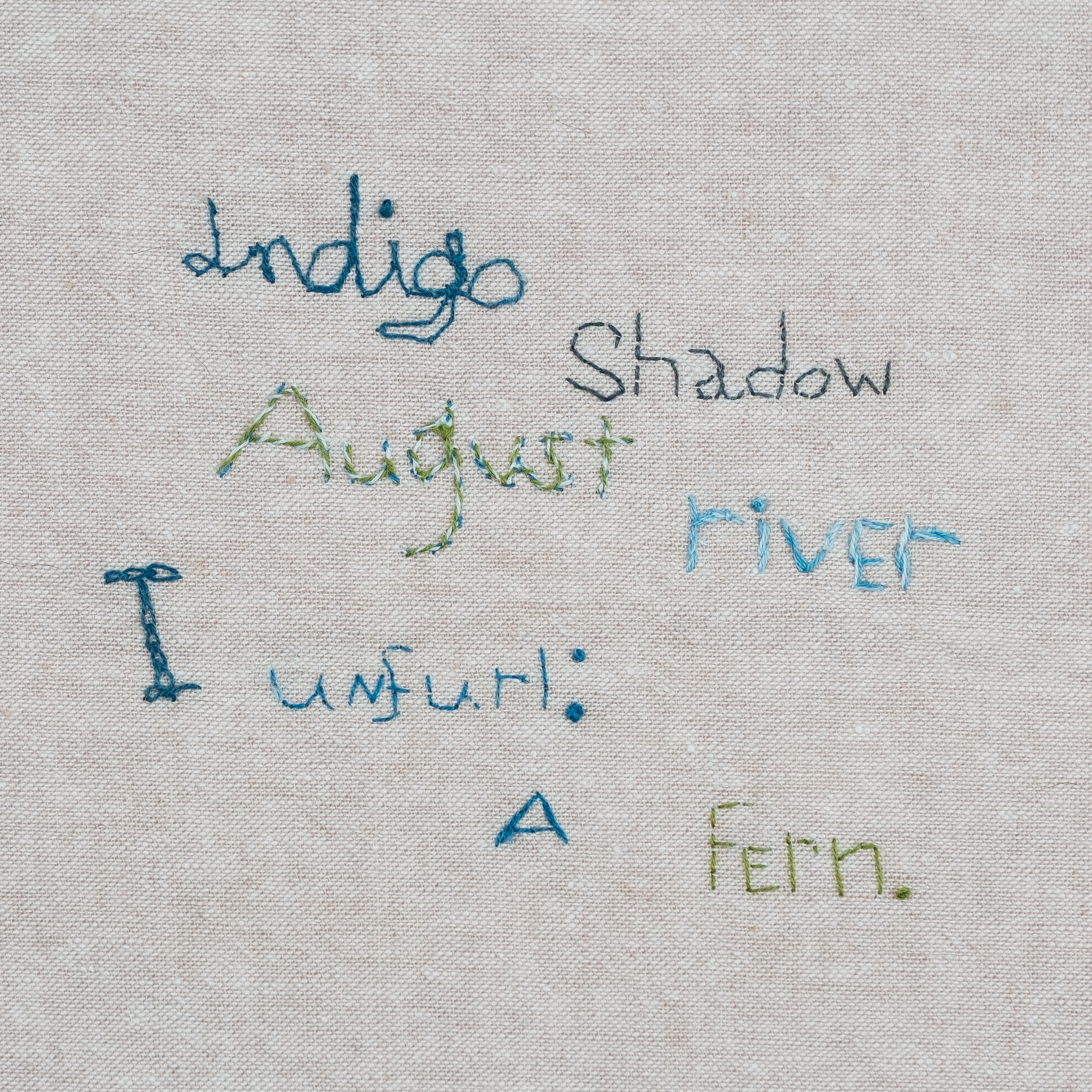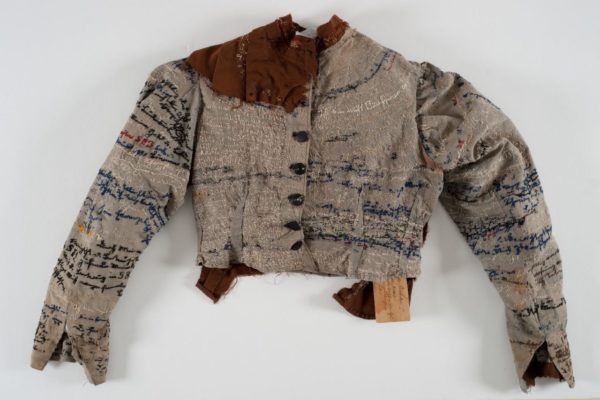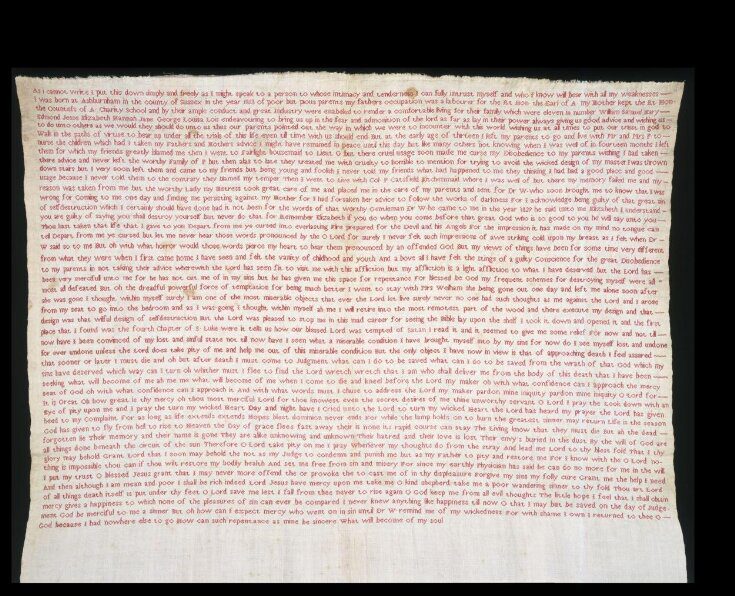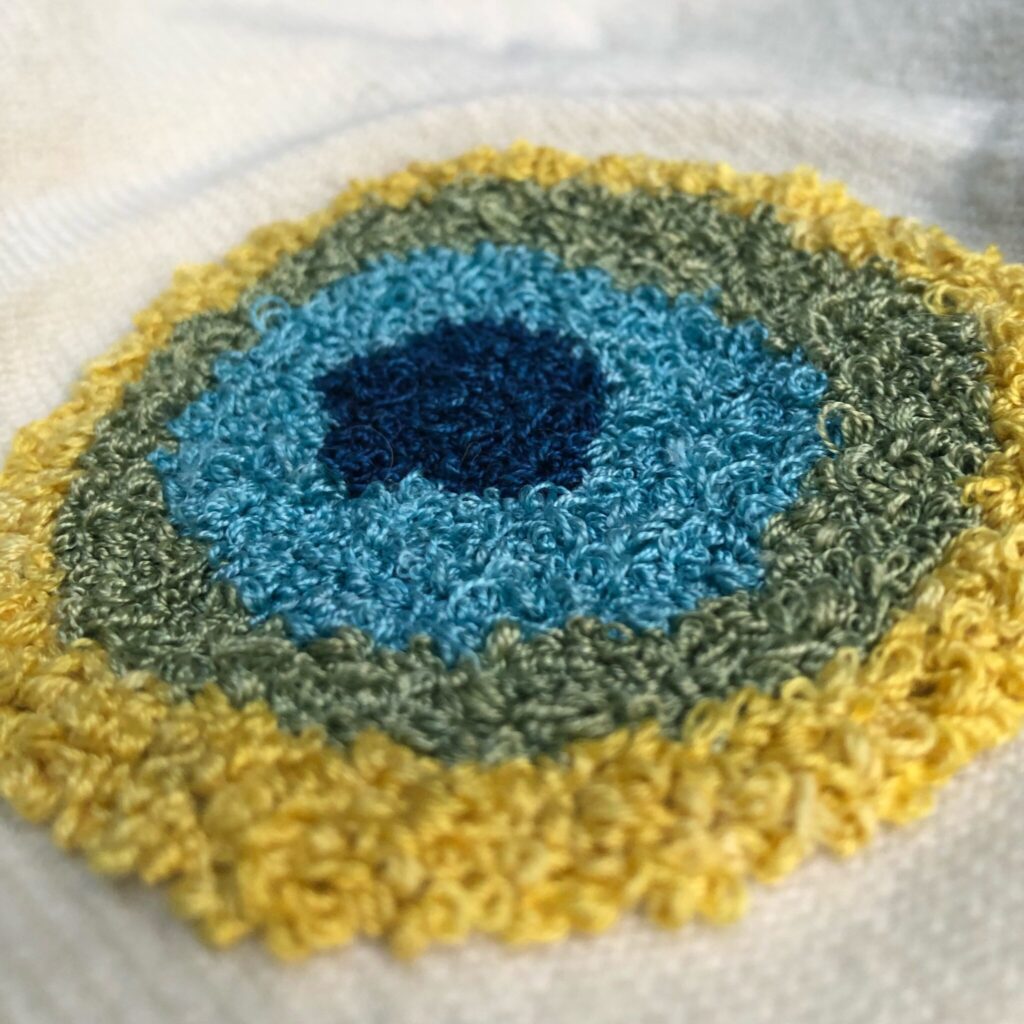
Beverly Army Williams is a textile artist and writer whose embroidery explores the power of repetition and expressive lines. As part of the Creative Embroidery Series at TATTER, Beverly will join us Saturday, October 12th, for an in-person workshop titled Embroidery as Writing. During the workshop, students will have the chance to compose their own written piece and learn about two fascinating 19th century women, whose remarkable and devastatingly expressive stitched texts have influenced Beverly’s own practice. She will discuss Agnes Richter, a seamstress who embroidered a diary onto her coarse linen jacket while institutionalized in the Heidelberg psychiatric hospital, and Elizabeth Parker, a teenage domestic worker who embroidered the brutal story of her abuse at the hands of her employer onto a cloth the size of a pillowcase. Both pieces are intensely moving and spontaneous, an outpouring of words stitched into cloth with haphazard desire. In advance of her class, we sat down with Beverly to discuss her connection to cloth and how her textile practice has influenced her writing. You can read our conversation and sign up for her workshop below.


Tell us about your practice as an artist.
First and foremost, I am a poet and fiction writer. But I love to draw, I love to paint, and I love bringing language and image together in my work. What really threads through my practices, my more visually learning practices, is this concept of capturing time. In 2020, I did a project where I made 10 French knots a day, every day, from solstice to solstice. I’m not a fast person; I embody slow stitching. Not because I want to, always, but I’m just really slow at it. I’ll stop and look at my work and just think about the stitch, think about how it looks on the cloth, how it’s sitting with me. It takes me a long time to do things, but I also feel like that’s where the meaning for me is: in those pauses.

That will be really interesting for students to experience because, especially in our creative embroidery classes, we often have people who have never picked up a needle before. They’re often surprised by how long it takes to create a row of stitches. How are you approaching the fact that we have a limited amount of time during the class?
I actually did a test run to make sure I had time to teach what I want students to absorb. I had a group of friends on Zoom, one of whom despises embroidery and agreed because of the writing aspect. She’s also a poet. She ended up being inspired by the process and plans to do more writing in embroidery. We’re going to focus on fairly simple stitches, straight stitches, chain stitches, so more experienced stitchers can pick what they want to do and people who are new can focus on the process. I’ll show four or five different stitches, but if someone just wants to do a straight stitch, they’re still going to be able to do everything we’re doing. I really want the time to be spent on actually writing. I’ll be showing historical examples from two women, who, as far as I can tell, composed their words on the cloth. I’m interested in what happens when we don’t write it out first, when we just put a needle and thread to the cloth.
I had been experimenting with composing directly onto the cloth when I came across Agnes Richter. I was especially taken with the fact that she was probably composing directly on to her clothes, completely spontaneously.
I wanted to get a sense for the materiality of that expression, so I started embroidering on a piece of antique French linen. I began all the sentences with “I want” and just went from there, stream of conscious style. The very first sentence took me about an hour and a half, and it was not that long. I was getting really fussy, the writing wasn’t pretty, so I had to let go of that desire for it to look nice. Poems can be very small things, and I didn’t want the chance to overthink. I just held it in my head and revised it as I went. I found that I was choosing words based on the kinds of letters I like to stitch, so it was interesting to see how the process of stitching changed the way I wrote.
What do you hope students will take from the class to use in their own practice?
I hope after the class students will play more with including text in their embroidery and with stitching and composing directly on cloth. I’d like them to feel more comfortable embracing imperfection, which can be challenging. And I’d like students to feel connected to stitchers throughout history who have used embroidery to express themselves when society wanted them to be silent.
